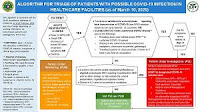Brain death/death by neurologic criteria (BD/DNC) is described in every jurisdiction in the U.S. as the irreversible cessation of all brain function, including that of the brain stem. The universal acceptance of this seemingly straightforward criterion masks an unsettling reality: "There are inconsistencies in concept, criteria, practice, and documentation of brain death/death by neurologic criteria (BD/DNC) both internationally and within countries." That's the opening salvo by an international, multidisciplinary group that has published its findings and recommendations in an important new paper in JAMA.
As summarized by the panel: "This report provides recommendations for the minimum clinical standards for determination of brain death/death by neurologic criteria in adults and children with clear guidance for various clinical circumstances. The recommendations have widespread international society endorsement and can serve to guide professional societies and countries in the revision or development of protocols and procedures for determination of brain death/death by neurologic criteria, leading to greater consistency within and between countries."
In the same issue, Dr. Robert Truog at Harvard Medical School and Boston Children's provides a useful editorial on the report. His bottom line: loss of consciousness, loss of spontaneous respiratory drive, and the irreversibility of both conditions are the source of inconsistency and confusion. Research as to all three factors is desperately needed and devilishly difficulty to carry out. And even if that research is performed and is successful in establishing clinical criteria for their determination, much work will remain to be done, e.g.:
Bringing these recommendations to the entire international community will require a 2-pronged approach. First, evidence to support the existing tests needs to be bolstered, and this may require greater use of advanced neurodiagnostic techniques. A key question will be whether the whole-brain biological standard for defining BC/DNC will remain tenable, or whether this concept should be replaced by the values-based brainstem standard. Second, since much of the world does not have access to advanced technologies, the World Brain Death Project will need to focus on development and validation of tests that rely on the clinical examination and widely available diagnostic tools. This will be essential if the capacity for accurately diagnosing BD/DNC is to become accessible to all clinicians around the world.


















